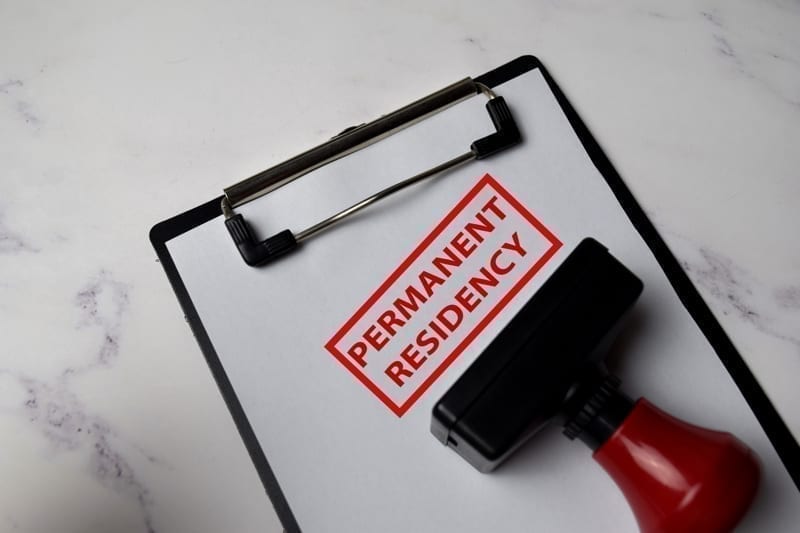While some countries make residency difficult and painful to acquire (ahem, France), others make it exceedingly easy. They want foreign residents bringing in foreign capital. There are entire industries devoted to designing residency and citizenship initiatives and attracting potential new folks to these countries.
I heard from a couple friends last week, career nomads and famous perpetual travelers, that they had managed to secure Mexican residency since the beginning of the year. They haven’t had a real or permanent residence for decades, and it was a problem for them in this COVID-19 era. They couldn’t guarantee that they’d be allowed into any country other than their own. So, while stuck in Seattle, they headed over to the Mexican Consulate and began the proceedings. Within just a few weeks they had their escape hatch all ready. They can now leave the States to go to Mexico whenever they wish.
And, as I mentioned last week, some of these visa offers are not just easy to apply for, they’re easy to maintain. My Panama permanent residency is just that—permanent—regardless of my whereabouts. Same goes for Mexican residency.
I keep repeating the word “easy,” but easy means different things depending on your goals and/or limitations. I’ve already mentioned easy to apply for and easy to maintain, but there are other ways a visa can be more accessible, too.
This debate has come up in editorial meetings over the years… specifically in referencing Colombia and Panama—both of which we had touted as having the “world’s easiest residency.”
In fact, both things are true. Panama is the easiest place to qualify for residency… but Colombia’s process is easier, meaning its visa is easier to acquire once you’ve qualified.
You also want to consider how difficult the residency, once obtained, is to maintain. As well, there are different kinds of residency programs—those intended specifically for retirees, for example, and those you qualify for through investment. Some of these are “easier” than others, of course.
Boiling it down to the top country for each category, here are the best backup residency options on the table today:
Panama—Easiest Residency To Qualify For
Panama is the easiest backup residency from the perspective of qualifying for residency. If you’re from one of 50 countries, then you qualify for residency in Panama under the Specific Countries residency program or what is commonly called the Friendly Nations residency visa. It doesn’t get any easier to qualify for residency than by simply carrying a passport from a country that Panama deems worthy.
Colombia And Mexico—Easiest Residency Process
While qualifying for residency in Colombia is easy, it’s not as simple as being a citizen of certain countries. Where Colombia shines, though, is its process. It’s straightforward, transparent, and doesn’t require a background check from your current country of residence. All requirements are clearly spelled out on the immigration website, and the requirements aren’t open to interpretation at the point when you interact with the individual immigration agents… as can be the case elsewhere in the world.
Mexico likewise offers an easy process that can be started online and completed within mere hours.
Dominican Republic And Mexico—Easiest Residency To Maintain
The Dominican Republic has what is probably the easiest residency permit to maintain. It comes with no time-in-country requirement. Once you’ve obtained permanent residency, you keep it simply by renewing your residency card every four years. If you’re not in the country to renew your card, you don’t lose your residency—you simply pay a penalty for every month you’re late in renewing. The nominal monthly penalties can add up over time if you go too long, but, as a backup residency, this can be your best option.
Again, Mexico also shines in this category. No matter how you seek residency in Mexico, there is no physical presence requirement, whether you’re on a temporary or permanent visa (so long as the visa is valid). Temporary visas here are valid for four years, but by investing more or proving additional funds, you can skip right to a permanent visa that will let you bypass renewals.
Nicaragua—Easiest Pensionado Program To Qualify For
The minimum income requirement to qualify for Nicaragua’s pensionado program is just US$600 per month. As the average monthly Social Security payment is more than US$1,400, most anyone receiving Social Security is in. If you don’t yet qualify for Social Security, you can obtain rentista residency in Nicaragua by showing as little as US$750 per month of stable permanent income (from a rental property, interest from a CD, or dividends from stocks, for example).
Ecuador—Easiest Through Investment
Ecuador offers the world’s easiest residency-through-investment option. You simply have to invest 70 times the minimum monthly salary in a bank CD for two years (730 days). That amounts to US$28,000. Or you can invest in real estate at 80 times minimum monthly salary, or US$32,000. You can also invest in a private company (can be your own company); the minimum investment requirement is 100 times the minimum monthly salary, or US$40,000 right now.
Portugal—Easiest In Europe
Right now, I’d call Portugal the easiest residency option in Europe. You can qualify simply by showing sufficient means. The specific amount isn’t stipulated and is at the discretion of the immigration agent handling the case; however, our attorney in Lisbon says that 1,200 euros a month is sufficient. Any provable passive income qualifies.
Kat Kalashian
Editor, Live and Invest Overseas Confidential










